Epoxy – the adhesive superhero that can fix just about anything. From patching up holes to creating stunning masterpieces, it’s a go-to for many projects. And once it cures, epoxy is known for its unbreakable bond and resilience. But what happens when you need to make adjustments or remove something bonded with epoxy? It can be a real pain if it has already hardened.
But fret not. In this blog post, we’ll walk you through all the ways you can soften hardened epoxy. We’ve got your back with different techniques for every situation- whether you need heat and solvents or prefer mechanical methods.
But wait, there’s more. Safety should always come first when working with any hazardous substance like epoxy. That’s why we’re also sharing some essential safety tips to keep in mind while handling it.
So, whether you’re a DIY enthusiast or a professional, stick around as we reveal the secrets of dealing with hardened epoxy. By the end of this article, you’ll have everything you need to know about how to work with hardened epoxy like a pro.
What Is Epoxy?
Contents
- 1 What Is Epoxy?
- 2 Why Does Epoxy Harden?
- 3 Can You Soften Hardened Epoxy?
- 4 Heat Method for Softening Hardened Epoxy
- 5 Solvent Method for Softening Hardened Epoxy
- 6 Safety Precautions When Softening Hardened Epoxy
- 7 Tips and Tricks for Working with Hardened Epoxy
- 8 Alternatives to Softening Hardened Epoxy
- 9 Conclusion
When it comes to finding a strong and reliable adhesive, epoxy is the go-to choice for many industries and DIY enthusiasts. This popular adhesive is known for its ability to create a strong bond between surfaces, making it a versatile and practical solution for a wide range of applications.
So, what exactly is epoxy? It’s a two-part adhesive made up of a resin and hardener that are mixed together just before use. Once mixed, the epoxy will start to cure and harden, forming a bond that is both durable and long-lasting.
From construction to automotive repair to woodworking, epoxy can be used in a variety of applications. It’s perfect for bonding different materials together or coating surfaces to protect them from damage.
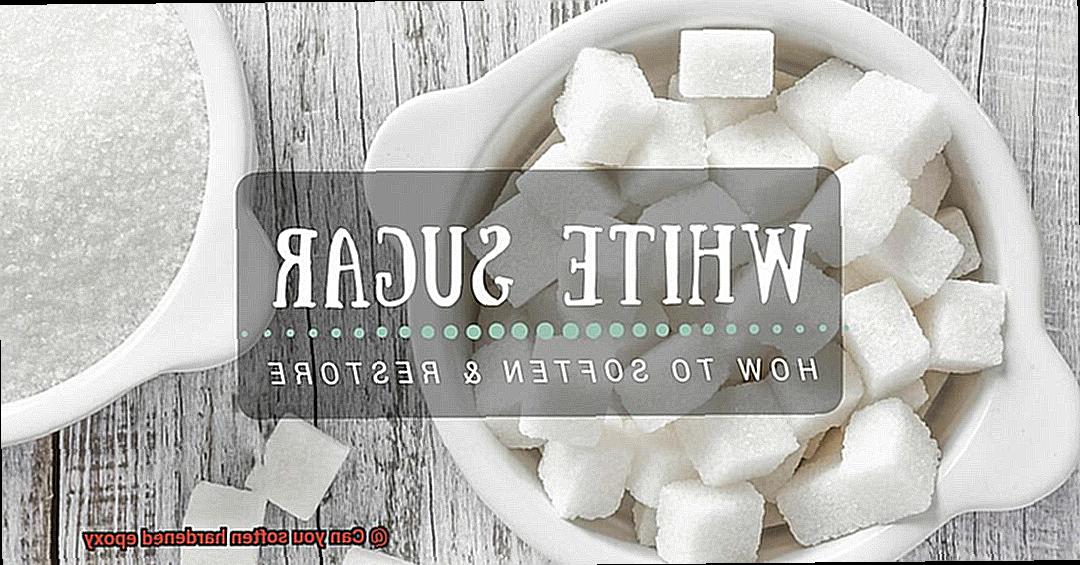
One of the key features of epoxy is its resistance to water and chemicals. This makes it an ideal choice for applications where exposure to harsh substances is a concern. Plus, its excellent adhesion properties allow it to bond to a wide range of surfaces, including metals, plastics, and wood.
Despite its strength and durability, working with hardened epoxy can be challenging. However, there are safe methods that can be used to soften hardened epoxy if needed. For example, heat or solvents can be used to soften the adhesive, but caution should be exercised when attempting these methods.
Why Does Epoxy Harden?
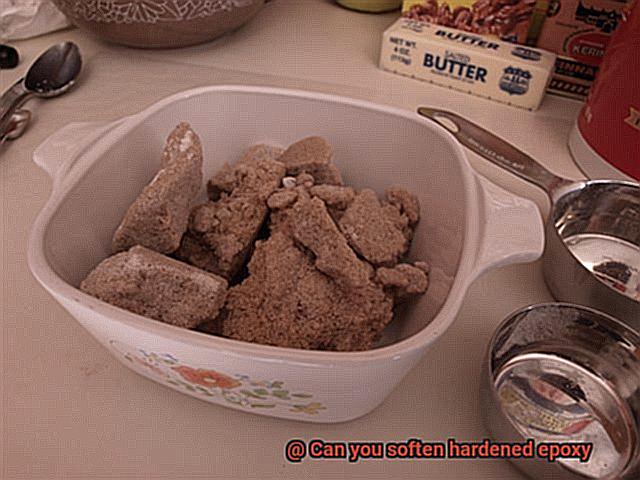
When these two components are mixed, they undergo a process called curing, which is essentially the hardening of the epoxy. This exothermic reaction releases heat, which speeds up the reaction and allows the epoxy to bond quickly and effectively.
The curing process converts the liquid epoxy into a solid polymer through cross-linking. The resin molecules are linked together with hardener molecules, creating a three-dimensional network of chemical bonds. This network of bonds provides epoxy with incredible strength and durability.
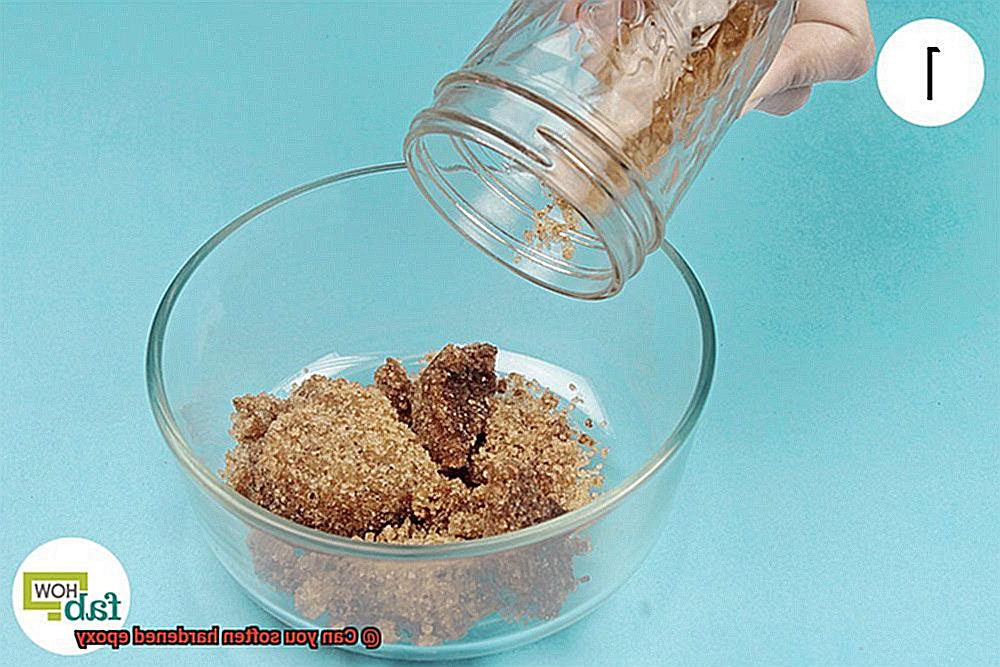
But how does this happen? When the hardener is added to the resin, it initiates a chain reaction that creates a complex web of chemical bonds. As this web grows, it solidifies into a rigid and durable material that can withstand water, chemicals, and heat.
Once fully cured, epoxy is an indispensable material in construction, automotive repair, woodworking, and many other applications where strong bonding properties are required. Its remarkable transformation from a liquid substance to a solid material is truly amazing.

In summary, epoxy hardens because of a chemical reaction that creates a three-dimensional network of chemical bonds. This process turns liquid epoxy into a solid polymer with incredible strength and durability. Understanding this process not only helps us appreciate the power of this adhesive but also ensures we use it safely and effectively in our projects.
Can You Soften Hardened Epoxy?

There are ways to soften it up and make it pliable again. Epoxy is a popular adhesive known for its strength, durability, and resistance to heat and chemicals. However, once it hardens, it can be challenging to remove or rework. But fear not, as an expert in epoxy, I’m here to share the techniques and solvents that can help you soften hardened epoxy.
One of the most common methods to soften hardened epoxy is by using heat. Heat guns, blow torches, and ovens are commonly used for this purpose. By applying heat gradually and evenly, you can break down the molecular structure of the epoxy and make it soft again. However, be cautious as too much heat can scorch or damage the surface underneath.
Another approach is to use solvents that dissolve or weaken the epoxy bond. Acetone, paint thinner, and vinegar are some of the most commonly used solvents for softening epoxy. These solvents penetrate the epoxy surface and break down its molecular bonds. While effective, these solvents can be toxic and flammable, so make sure to use appropriate safety precautions.
In some cases, mechanical methods such as sanding or scraping can also be used to soften or remove hardened epoxy. However, these methods require caution as they can damage the surface underneath if not done correctly.
To summarize, while epoxy is a strong adhesive that can be difficult to work with once hardened, there are specific techniques and solvents that can help soften it up. Here’s a list of things to keep in mind when working with hardened epoxy:
- Choose the method best suited for your particular situation
- Apply heat gradually and evenly to avoid damaging the surface underneath
- Use appropriate safety precautions when working with solvents as they can be toxic and flammable
- Be cautious when using mechanical methods such as sanding or scraping to avoid damaging the surface underneath
Heat Method for Softening Hardened Epoxy
There are various methods to soften it and make it pliable again, with the heat method being one of the most popular options.
Before you begin, gather all the necessary tools and materials such as a heat gun, scraper or putty knife, and safety equipment including gloves and goggles. Once you have everything ready, start by applying heat to the affected area with the heat gun. Remember to keep the gun moving to avoid overheating any one spot and causing damage. Be mindful of how close you are to the epoxy as it can bubble or burn if too close.
As you apply heat, the epoxy will gradually soften and become more pliable. This is when you can use your scraper or putty knife to gently remove it from the surface. For stubborn spots, continue heating until they are soft enough to remove.
Safety is critical when using the heat method. Always wear protective gear and exercise caution when applying heat to avoid damaging the surface or causing injury. If the epoxy is not responding well to the heat method, don’t worry, there are other approaches such as solvents or mechanical methods.
Solvent Method for Softening Hardened Epoxy
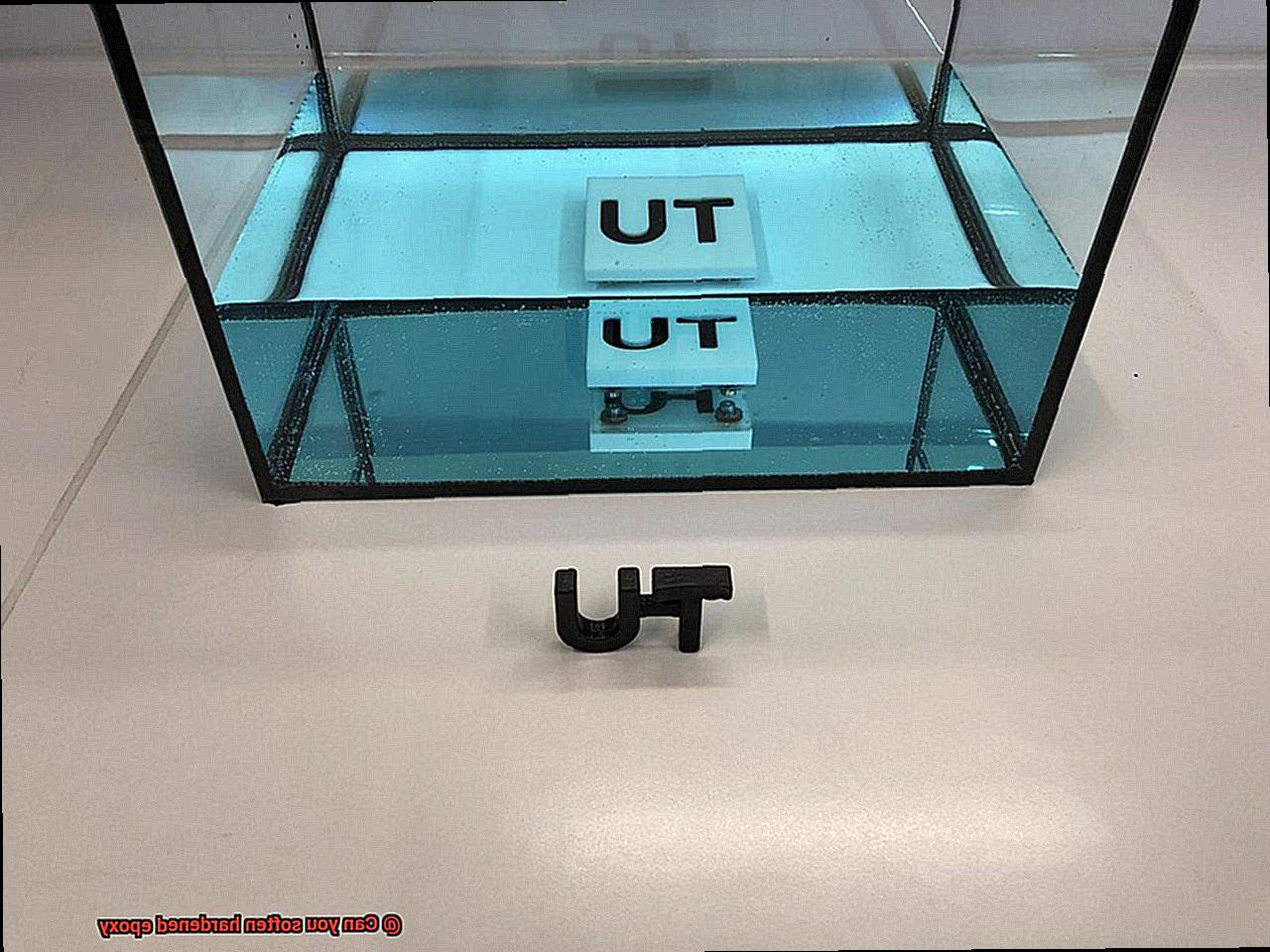
There is a solution that can make it pliable again – the solvent method. This popular and effective technique involves using a chemical solvent to dissolve the epoxy and make it easier to remove. However, it’s important to note that not all solvents are created equal, and it’s crucial to choose the right one for the specific type of epoxy you’re dealing with.
Acetone is a common solvent that works well for many types of epoxies. This powerful chemical can dissolve plastics and adhesives, including hardened epoxy. To use this method, simply soak the hardened epoxy in acetone for several hours or overnight, depending on its thickness. Once it has softened, you can easily scrape or sand it away.
Another strong solvent that can be used to soften hardened epoxy is methyl ethyl ketone (MEK). Like acetone, MEK dissolves many types of plastics and adhesives. To use this method, soak the hardened epoxy in MEK for several hours or overnight. Once the epoxy has softened, you can remove it with a scraper or sandpaper.
It’s important to handle solvents with care, as they can be dangerous if not used properly. Always wear gloves and protective eyewear when working with solvents, and make sure you’re in a well-ventilated area to avoid inhaling fumes.
While other solvents like alcohol and vinegar may also work for softening hardened epoxy, they may not be as effective as acetone or MEK. Furthermore, they may take longer to work.
Safety Precautions When Softening Hardened Epoxy
Working with hardened epoxy can be a frustrating experience, but before you attempt to soften it up, it’s essential to prioritize safety. Here are some precautions you should take to ensure the process is done safely and effectively.
Firstly, always wear appropriate personal protective equipment (PPE) when handling any chemicals, including the ones used in the process of softening hardened epoxy. Ensure that you have gloves, safety glasses or goggles, and a respirator if necessary. Additionally, work in a well-ventilated area to prevent inhaling any harmful fumes.
It’s crucial to read and understand the instructions on the product label or the manufacturer’s website before attempting to soften hardened epoxy. Follow all instructions carefully and avoid deviating from them. Improper use of chemicals can result in serious injury or even death.
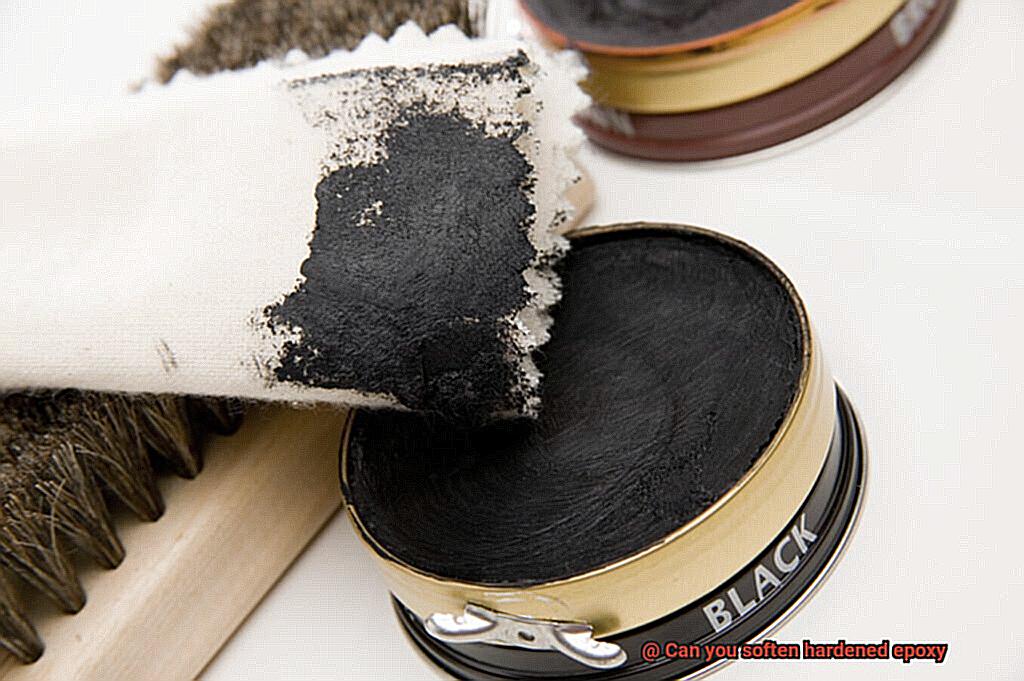
Keep all chemicals out of reach of children and pets, store them in a secure location away from heat sources, open flames, and other chemicals. Also, have an emergency plan in place in case of accidental exposure or injury. This includes having access to a first aid kit and knowing how to use it, as well as having emergency contact information readily available.
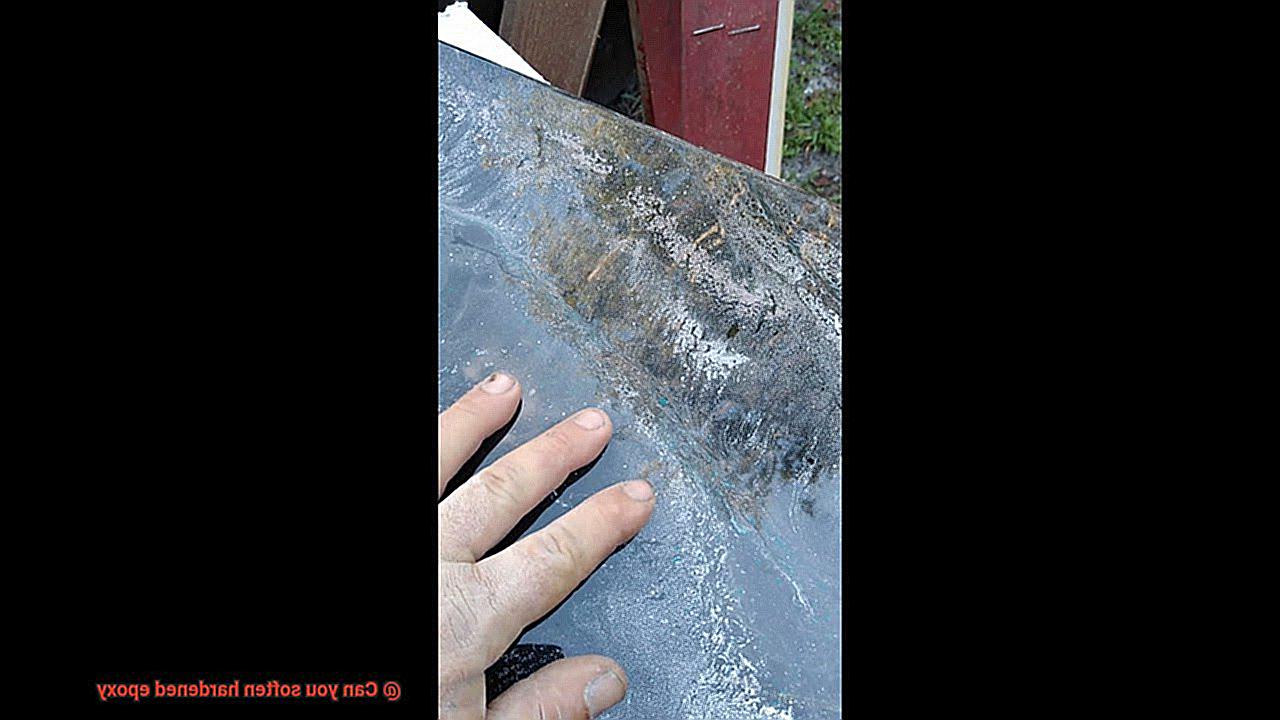
Lastly, dispose of all chemicals properly after completing the process of softening hardened epoxy. Ensure that you follow local regulations for hazardous waste disposal or seek guidance from your local waste management facility.
Tips and Tricks for Working with Hardened Epoxy
Working with hardened epoxy can be a daunting task, but with some knowledge and skill, you can soften it and make it easier to work with. Below are five techniques that can help you achieve this goal.
Heat it up
One of the most effective ways to soften hardened epoxy is by applying heat directly to it. You can use a heat gun or a hair dryer to apply heat to the hardened epoxy until it becomes pliable. However, be cautious not to overheat the epoxy, as it may become brittle and crack.
Use a solvent
Acetone is a widely used solvent that can dissolve epoxy, making it easier to work with. Other solvents such as alcohol, vinegar, and citrus-based cleaners may also work. Before using any of these solvents, test them on a small area to ensure they don’t cause damage.
Soak in water
If the epoxy is water-soluble, soaking it in water can help soften it. However, be careful not to soak it for too long as this may cause the epoxy to lose its strength.
Mechanical methods
You can use sandpaper or a rotary tool to grind away at the hardened epoxy until it becomes softer and more pliable. However, be cautious when using these tools as they can easily damage the underlying surface if not done carefully.
Be patient
Softening hardened epoxy takes time and patience. Rushing the process may lead to mistakes or make the problem worse. Take your time and work carefully.
Alternatives to Softening Hardened Epoxy
Epoxy is a versatile adhesive that can bond various materials together. However, when it hardens in unwanted places, it can be a headache to remove. While softening hardened epoxy is the go-to method for removal, there are instances where it may not work or might not be the best option. So what are the alternatives? Let’s explore some fascinating and effective options:
Sanding or Grinding:
When dealing with thick layers of hardened epoxy on a flat surface, sanding or grinding can be an excellent alternative to softening it. Although this technique can be time-consuming and messy, it can be an effective option when other methods fail. It’s important to wear protective gear like goggles and a mask.
Using a Heat Gun:
If soaking the hardened epoxy in a solvent isn’t your thing, you can use a heat gun as an alternative. By applying heat directly to the hardened epoxy until it becomes pliable enough to scrape away with a putty knife or similar tool, you can avoid using solvents altogether. However, overheating the epoxy is a potential hazard as it may catch fire or release harmful fumes.
Using a Mechanical Tool:
If the hardened epoxy is on a surface that can withstand some scraping, using mechanical tools like chisels or scrapers could be your easiest solution. These tools are effective in removing small amounts of hardened epoxy without damaging underlying materials. However, caution must be exercised to prevent gouging or scratching the surface.
Chemical Strippers:
Chemical strippers containing powerful solvents can break down epoxies and other adhesives as an alternative to softening hardened epoxy. But be sure to read and follow instructions carefully as they can also damage the surface being worked on if used improperly.
v6LuNGv4IKo” >
Conclusion
To sum up, epoxy is a remarkable adhesive that can bond various materials together with ease. Nevertheless, once it sets, removing or reworking it can be quite challenging. But fret not. There are safe and effective methods that you can use to soften hardened epoxy if need be. The most common methods include using heat or solvents and mechanical techniques such as sanding or scraping.
However, safety should always be your top priority when working with any hazardous substance like epoxy. To ensure your safety, make sure you wear appropriate personal protective equipment (PPE), follow all instructions carefully, and dispose of all chemicals properly after completing the process of softening hardened epoxy.
If softening hardened epoxy isn’t an option for you, there are alternatives like sanding or grinding, using a heat gun, using a mechanical tool, or chemical strippers containing powerful solvents.
In conclusion, mastering the art of working with hardened epoxy safely and effectively is crucial for DIY enthusiasts and professionals alike.






